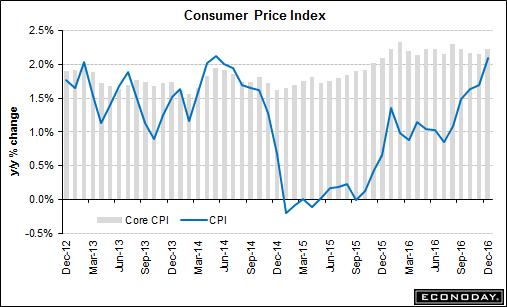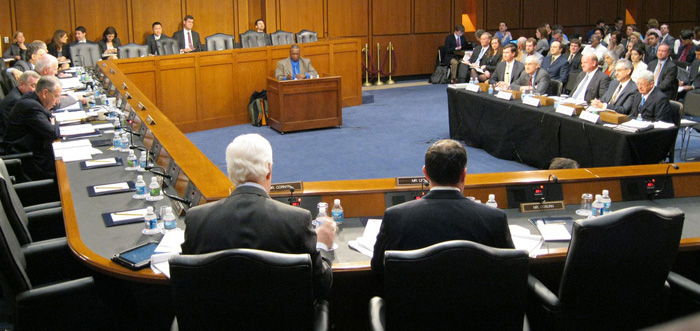
Tax credit has helped create a robust industry in New Mexico, report says
By Christopher Ortiz
New Mexico has benefited from its renewable energy production tax credit, which has supported more than 11,000 jobs and represents $1.6 billion in economic activity, according to a new report.
The report, released by Family Businesses for Affordable Energy this week, says the state has established has “a robust renewable energy generation sector with enormous potential for growth” and clean power is a wise investment for New Mexico. The credits are set to expire next year.
Over 13 years, $120 million in renewable energy production tax credits have been claimed. New Mexico has seen 13 commercial wind facilities with a capacity of 1.1 gigawatts and 46 solar photovoltaic facilities with a capacity of 452 megawatts come online. According to the report, power producers that have taken advantage of the renewable energy production tax credits have spent $1 billion in the state constructing, equipping, operating and maintaining 31 generation facilities. For every $1 in state tax expenditure, these projects generated $5 in labor income, the report claims. The report points out that the tax credits are not the only factor considered in where and when renewable energy facilities are built.
According to the Santa Fe New Mexican, proposed legislation would extend the renewable energy tax credits through 2023. The legislation would also raise existing caps on the amount of renewable energy production eligible for the credits.
O’Donnell Economics and Strategy prepared the report for Family Businesses for Affordable Energy, which says it supports policies that lower energy prices for small businesses. Data for the report came from the New Mexico Energy, Minerals and Natural Resources Department. A 2015 report from the same department found that for every 14 cents in tax expenditure, renewable energy production tax credit projects generated $1 in labor income.
http://www.bizjournals.com/albuquerque/news/2017/03/08/tax-credit-helped-renewables-nm-report-says.html

New Mexico’s Wind/Solar Tax Credit Works New Study Finds 11,700 New Jobs, $1.6 Billion Created
Family Businesses for Affordable Energy (FBAE) today announced a new economic impact study, finding that New Mexico’s solar/wind tax credits have created more than 11,700 jobs, $1.6 billion in economic activity and more than $600 million in new labor income.
The FBAE analysis estimated the economic impact of New Mexico’s Renewable Energy Production Tax Credit (REPTC) and now represents the most current research on the subject. The REPTC, originally implemented in 2003, is a credit against New Mexico personal or corporate income tax that is available to companies that produce electricity from renewable resources for commercial sale.
“These tax credits are a phenomenal success for New Mexico,” said Palmer Schoening of the FBAE. “Taxpayers are getting a huge return on their investments in clean energy – new jobs, new investments, new economic activity –while reaping the additional environmental benefits that come from clean energy. This is a win-win-win situation for taxpayers, consumers, and businesses throughout New Mexico.”
Findings of the study include:
- A total of $120 million in Renewable Energy Production Tax Credits have been claimed over the past 13 years. During that time, New Mexico has made significant progress in developing its wind and solar power capacity, gaining 13 commercial wind facilities with nameplate capacity of 1.1 gigawatts and 46 solar photovoltaic (PV) facilities with nameplate capacity of 452 megawatts.
- During that time, REPTC-certified power producers have spent over $1 billion in New Mexico to construct, equip, operate, and maintain 31 generation facilities. Expenditures by REPTC-certified power producers have supported 11,771 full and part time jobs, $611 million in employee compensation, and $1.6 billion in economic activity statewide.
- For every $1 in state tax expenditure, REPTC-certified projects generated over $5 in labor income.
- These economic impacts have generated state and local tax revenue totaling $74.6 million and averaging $6.8 million annually.
Palmer called for the extension of the REPTC, an extension that will lead to more new jobs and investments, while helping to lower the cost of energy for families and businesses. The REPTC is set to expire January 1, 2018. A bipartisan bill (HB440 and SB432) changes and temporarily extends the program. The goal: to support continued investments in New Mexico while also adjusting the tax credit itself to better reflect the decreased costs of building renewable energy facilities.
In addition, the bill provides a more appropriate end date for the program, phasing out the production tax credit by 2023—as opposed to ripping the rug out from under companies already invested as well as the ones on the waiting list.
“New Mexico has made great progress in renewable energy since implementation of these tax credits,” he said. “Our study proves beyond any doubt that for every dollar you invest, New Mexico gets $5 dollar back in labor income, thousands of new jobs and billions in new investment. Solar and wind done right reaps great benefits for New Mexico, and New Mexico has been doing it right.”
O’Donnell Economics and Strategy conducted the study. Kelly O’Donnell is an economist and research professor at the University of New Mexico Institute for Policy, Evaluation, and Applied Research. Her specialties include regional economic development, economic impact analysis, and state fiscal policy. Prior to academia, Dr. O’Donnell held a series of leadership roles in New Mexico state government including Director of State Tax Policy, Deputy Cabinet Secretary for Economic Development, and Superintendent of the New Mexico Regulation and Licensing Department. She holds a PhD in Economics from the University of New Mexico.
O’Donnell can be reached at 505-659-5702 or [email protected].
Schoening can be reached at 202-787-1399 or [email protected]

LI business owners’ wish list for Trump: Repeal regulations
By Aisha Al-Muslim and Daysi Calavia-Robertson
Many small business owners on Long Island say they are overtaxed and overregulated, and are hopeful President Donald Trump will deliver on his plans to cut taxes and reduce federal regulations, which they cite as major challenges.
No. 1 on their wish list to change is the Affordable Care Act (ACA), known as Obamacare, which Trump has promised to repeal and replace. Some also cited regulations specific to their industries, including food safety requirements and workplace safety standards. In many cases they said record-keeping and reporting requirements, rather than the substance of the regulations, make compliance expensive.
“A reduction in the federal regulatory burden will facilitate business growth, support job creation and hiring,” said Rob Basso, founder of Advantage Payroll Services in Freeport, which does payroll for about 3,000 small and midsize companies, most of them on Long Island.
In 2016, federal agencies issued 3,853 rules and regulations — 43 more than in 2015 — and 600 of those affected small businesses directly, according to the Competitive Enterprise Institute, a nonprofit libertarian public-policy organization in Washington, D.C.
In a survey of 750 small businesses by the National Federation of Independent Business, roughly half cited regulations as a serious problem.
Last month, Trump signed an executive order requiring federal agencies to cut two existing regulations for each new rule they enact. And he issued an order directing agencies to ease regulations associated with the ACA. Last week, Republican leaders met to consider an ACA replacement plan, which could include health savings accounts and tax credits.
Currently, the ACA requires employers with 50 or more full-time workers to file forms with the Internal Revenue Service for every worker, showing that they have health insurance that meets minimum coverage requirements, or face penalties. It also requires that businesses track workers’ hours to determine an employee’s full-time or part-time status.
Anthony Acampora, a partner at Jericho-based law firm SilvermanAcampora, said third-party providers charge about $10,000 to $11,000 a year to handle ACA compliance for a company with 75 full-time employees. Business owners who choose to do it themselves would spend about $7,000 or $8,000 a year, but they run the likelihood of making errors, he said.
Hauppauge-based defense manufacturer GSE Dynamics Inc. had been trying to stay under 50 employees to avoid increased federal and state mandates, president and owner Anne Shybunko-Moore said. But in 2012, the company decided going over that mark was worth its time and resources, she said. The company hired SilvermanAcampora to oversee compliance, including ACA reporting requirements for its 65 employees.
“GSE has consistently felt that providing quality health insurance is an obligation of the employer, though the cost of health care continues to be a challenge,” said Shybunko-Moore, chairwoman of the Manufacturing Consortium of Long Island. She said the ACA doesn’t need to be repealed, but it needs some improvements, “specifically affordability and access for small businesses.”
Some employers who don’t meet the 50-employee threshold, and so are not required to provide insurance to their employees, said health insurance costs are still a concern.
Diane Lordi, co-owner of Atlantic Blueprint Co., a Roslyn business that provides printing services for architects, designers and engineers, said she used to provide health insurance for her 15 full-time workers. But she stopped in 2015, when the premium for an employee with a family of four rose from $1,300 to $1,900 a month, she said.
“Business was slow, and the burden of paying higher health care premiums was astronomical,” Lordi said. “About a year ago our employees had to go get their own health insurance” on the state’s insurance marketplace. “It’s very sad, because it’s so expensive,” she said.
It remains to be seen whether Trump’s policy changes can do anything about rising health insurance costs, which were notching hefty annual price increases long before the ACA was passed.
Aside from the ACA, many businesses face industry-specific rules. For those in the farming industry, food safety regulations from the U.S. Department of Agriculture can increase record keeping and be costly for small farmers, two local farmers said. More regulations hurt small farms, they said, while large corporate farms benefit from them because they can afford to comply.
One example is GAP (good agricultural practices), a voluntary USDA food safety certification. While it is not required by law, a growing number of food retailers and wholesalers will not buy from farms that are not GAP certified. To be certified, farms must undergo audits to ensure rules about safe packaging, handling and storing of fruits and vegetables are followed. The audits generally cost farms $600 to $1,000 a year, but the full cost can run much higher because farmers may need to hire a food safety manager and purchase new equipment.
“Big business loves regulations,” said Phil Schmitt, who operates the 175-acre Phil A. Schmitt & Sons Farms Inc. in Riverhead. “For me, I’d have to have someone full-time on the payroll to do it. For a small business like me to hire someone would cost $40,000 to $50,000. I can’t pay them that, but big business can.”
Lyle Wells, owner of the 150-acre Wells Homestead Acres in Riverhead, agreed. “We always strive for food safety as food producers,” he said. “These rules and regulations are being forced on an industry that doesn’t really require it.”
Wells added that he is considering reducing his vegetable production and selling more flowers because their production is less heavily regulated.
For some businesses, including those in construction and manufacturing, adhering to workplace safety regulations from the U.S. Department of Labor’s Occupational Safety and Health Administration can be difficult, owners said. Employers are required to provide employees with training, safe equipment and medical examinations, as well as maintain records and report work-related injuries and illnesses.
“You do your best to comply, but you live in fear that . . . [an OSHA inspector] will show up on a job site unannounced,” said Ben Jackson, co-owner of Ben’s General Contracting Corp. in Freeport, which has been in business since 1980 and employs 27 workers. “Everyone is in favor of safety, but the fines are so high it’s ridiculous; a minor infraction can cost about $25,000. If a company can’t pay it, it’ll put them out of business.”
Last year, OSHA increased its fines for the first time since 1990, raising maximum penalties by about 80 percent.
Though business owners complain about regulations, they are important protective measures for workers and consumers, as well as the owners themselves, said Charlene Obernauer, executive director of the New York Committee for Occupational Safety and Health, which advocates for improving workplace conditions.
“Oftentimes, people misunderstand regulations as being bad for business, but it is about knowing what to do so they can keep their workers safe,” Obernauer said. “Workers are less likely to be injured and in some cases die on the job. The employers themselves then won’t have increased liability, including workers’ compensation and lawsuits.”
Small businesses also support simplifying the tax code to address discrepancies between corporate and individual rates. About 75 percent of small-business owners are taxed at the individual tax rate, not the corporate tax rate, because their businesses are structured as pass-through entities, according to the National Federation of Independent Business. A pass-through entity is a business structure used to eliminate double taxation, such as income tax being collected once on corporate income and again when profits are distributed as dividends to shareholders.
Business owners would like to see both the top individual tax rate of 39.6 percent and the corporate tax rate of 35 percent lowered to 15 percent, said Raymond Haller, tax partner of accounting firm Grassi & Co. in Jericho.
“The key thing is that you have to leave the money in the business in order to grow the business,” Haller said. “The idea is that if you pay less taxes, you will buy more equipment, hire more people and buy more companies.”
Aside from federal regulations, small-business owners also pointed out that other factors also affect how they conduct their businesses, including the state minimum wage, zoning laws, real estate and energy prices.
“Nobody says, ‘Let me have more regulations to make my business easier,’ ” said Ken Greenberg, co-founder of Patient Innovations, a software company in Hauppauge. “It is not just federal, it is also state and local regulations. New York, in general, is one of the most overregulated states.”

Continuing New Mexico Tax Credit for Wind/Solar Program Will Create New Jobs, Billions in Investments
Family Businesses for Affordable Energy (FBAE) today called for the extension of the New Mexico Renewable Energy Production Tax Credit (REPTC), an extension that will lead to more new jobs and investments, while helping to lower the cost of energy for families and businesses.
With this simple incentive, New Mexico already created thousands of jobs with billions in new investments. According to a recent study commissioned by the NM Energy, Minerals & Natural Resources Department, the tax credit created over 9,000 jobs, $430 million of labor income, and reductions in electricity costs—numbers that significantly exceed the fiscal cost of the tax credit.
Conservative estimates are that there is $1.5-$2 billion worth of investments on the current solar waiting list alone. This could translate into 7,000-9,000 new jobs for New Mexico just waiting for the tax credit extension.
“New Mexico should continue to invest in its energy infrastructure,” said Alex Ayers, Executive Director of FBAE. “Taxpayers will get a huge return on new jobs, new companies, and projects that are already in the pipeline, just waiting to get started if this credit is continued. We cannot allow these potential jobs to just be thrown away or to leave New Mexico for other states with tax credits.”
“These tax credits are good for family businesses, good for taxpayers and good for the New Mexico economy,” he said.
In 2002, New Mexico expanded its renewable energy sector, bringing jobs, investments and sustainable energy into the state. To help spur private investments, the legislature implemented the REPTC—a tax credit available to energy companies who generate electricity from renewables, such as solar arrays and wind turbines.
This incentive program is set to expire January 1, 2018. A bipartisan bill (HB440 and SB432) changes and temporarily extends the program. The goal: to support continued investments in New Mexico while also adjusting the tax credit itself to better reflect the decreased costs of building renewable energy facilities.
In addition, the bill provides a more appropriate end date for the program, phasing out the production tax credit by 2023—as opposed to ripping the rug out from under companies already invested as well as the ones on the waiting list.

Why consumers should brace for higher prices
By Anthony Mirhaydari
Consumers, get ready: You’re about to suffer some sticker shock. Thanks to the post-election surge of business optimism, last year’s rebound in energy prices and a tightening labor market, we learned this week that inflation measures are already rising at the fastest pace since 2013.
Headline consumer price inflation jumped 0.6 percent month-over-month — double the expected gain. On an annual basis, inflation is rising at a 2.5 percent clip (the hottest since March 2012).
Should these trends continue, as they appear ready to do, shoppers are going to suffer a surge of higher prices not seen since the end of the last economic expansion in 2007.
It’s not just inflation, but real growth is heating up as well. And that means the inflation surge is no mere flash in the pan.
Headline retail sales rose 0.4 percent in January over December, pushing the annual rise to a level that was last hit in 2014. And the February Empire State manufacturing survey increased to its strongest print since September 2014.
Separately, producer price inflation increased 0.6 percent last month from the month prior, double the gain expected and landing the annual rate at 1.6 percent — another level not seen since 2014. You get the idea.

Digging into the consumer price index (CPI, chart above), energy is playing a big role, with gasoline prices up 7.8 percent as we eclipse last February’s energy price wipeout before OPEC started teasing a production freeze agreement that was eventually finalized late last year. But other areas of upward price pressure include apparel, new vehicles, household furnishings, housing and medical care. So the forces are broad-based.
Shelter costs in particular are a big deal because they’re heavily weighted in inflation measures (at about a third of overall spending) and have been rising steadily in recent years. The CPI’s shelter component is rising at a 3.5 percent annual rate — last hit in the fading days of the housing bubble in 2007.
Two dynamics threaten to precipitate the inflation surge: The long-awaited rise of wage pressure and the ability of businesses to pass higher costs onto consumers via higher prices.
Wages certainly look poised for a move higher, assuming the tepid but steady payroll gains continue. The National Federation of Independent Business survey found a growing shortage of qualified, desirable applicants. The latest numbers show the net share of small companies saying they’re receiving inadequate applicants for job postings rose to 47 percent from 44 percent in December.
Should this hiring tightness translate into higher pay as businesses compete for a diminished pool of quality workers, the temptation to protect profitability will be hard to resist.
So far, this dynanmic isn’t hitting consumers: Only 5 percent of NFIB respondents said they’re raising prices. But that could soon change.
Originally posted at: http://www.cbsnews.com/news/why-consumers-should-brace-for-higher-prices/

U.S. producer inflation boosted by higher energy prices
U.S. producer prices recorded their largest gain in more than four years in January amid increases in the cost of energy products, but a strong dollar continued to keep underlying inflation at the factory gate tame.
Rising raw material costs are boosting producer prices across the globe, notably in China, which is the biggest source of U.S. imports. But economists still expect overall U.S. inflation to keep climbing gradually given the buoyant dollar.
“China saw the biggest price gain since 2011 in January. Given that most of the upward price pressure is the result of raw materials prices returning from the depths of last year, the longer-term view continues to be wary but not alarmed,” said Jay Morelock, an economist at FTN Financial in New York.
The U.S. Labor Department said on Tuesday its producer price index for final demand jumped 0.6 percent last month, which was the biggest rise since September 2012 and followed a 0.2 percent gain in December. Higher prices for some services also contributed to the increase in January.
Economists had expected the PPI to rise 0.3 percent in January. Despite the surge, the PPI only increased 1.6 percent in the 12 months through January after a similar gain in December. A measure of underlying producer price pressures that excludes food, energy and trade services advanced 0.2 percent after edging up 0.1 percent in December.
The so-called core PPI rose 1.6 percent in the 12 months through January, slowing from December’s 1.7 percent gain. The Federal Reserve has a 2 percent inflation target.
Gradually rising inflation together with a tightening labor market and firming economic growth should position the Fed to continue raising interest rates this year. The U.S. central bank raised rates in December and projected three more hikes in 2017.
Fed Chair Janet Yellen told U.S. lawmakers on Tuesday that waiting too long to raise borrowing costs would be “unwise.”
The dollar .DXY was trading higher on Yellen’s comments, touching a three-week high against a basket of currencies. U.S. government bond prices fell while stocks on Wall Street were mixed.
DOLLAR STRENGTH
More U.S. manufacturers are reporting paying higher prices for raw materials. The Institute for Supply Management’s (ISM) prices index surged in January to its highest level since May 2011.
Closely correlated to the PPI, the ISM index has advanced for 11 straight months. Those gains largely reflected increases in the prices of commodities such as crude oil, which are rising due to a steadily growing global economy. Oil prices have climbed above $50 per barrel.
But with the dollar strengthening further against the currencies of the United States’ main trading partners and wage growth still moderate, the spillover to consumer inflation from rising commodity prices is likely to be limited.
A government report on Friday showed import prices excluding fuels fell in January for a third straight month. Data on Wednesday is expected to show the consumer price index increased 0.3 percent last month after a similar gain in December, according to a Reuters survey of economists.
“While the trend in inflation remains upward, it is not quickening as fast as today’s headline suggests. Inflation is not an immediate issue for the Fed,” said Sarah House, an economist at Wells Fargo Securities in New York.
Last month, prices for final demand goods increased 1.0 percent, the largest rise since May 2015. The gain accounted for more than 60 percent of the increase in the PPI. Prices for final demand goods advanced 0.6 percent in December.
Wholesale food prices were unchanged last month after climbing 0.5 percent in December. Healthcare costs edged up 0.2 percent. Those costs feed into the Fed’s preferred inflation measure, the core personal consumption expenditures (PCE) index.
The volatile trade services component, which measures changes in margins received by wholesalers and retailers, shot up 0.9 percent in January after being unchanged in the prior month.
Originally posted at: http://www.reuters.com/article/us-usa-economy-idUSKBN15T1PS

Energy costs factor into business development, expansion decisions
By
When the Massachusetts Green High Performance Computing Center was seeking a location, it chose Holyoke for two reasons: the city’s low electricity prices and its access to interstate highways and a fiber optic communications network.
“We think about the cost of electricity every day,” says the computing center’s executive director, John Goodhue.
For many businesses, whether they rely on powerful computers or manufacturing equipment, the price of electricity is a major part of the cost of doing business.
When businesses look to relocate, electricity costs can be a substantial factor in a company’s decision to move to Western Massachusetts. And cities like Holyoke that have municipally owned utilities may have a leg up when it comes to price.
Municipally owned utilities are typically able to offer cheaper electricity than the major investor-owned companies, although the investor-owned utilities say they offer other benefits to compensate for higher prices.
“It’s a significant cost of doing business, and it goes directly to a company’s bottom line,” says Richard K. Sullivan Jr., president and CEO of the Western Massachusetts Economic Development Council, who served as the state’s secretary of energy and environmental affairs under former Gov. Deval Patrick. “By and large, Western Massachusetts can be very competitive on utility costs with most everywhere in New England. If you take a look at the municipal (utilities), we can be more competitive than the eastern part of the state.”
In general, the Northeast is one of the most expensive regions in the country for electricity. “It’s absolutely one of the significant factors that companies look at when they’re looking at expansion opportunities or coming into a new area to build new,” Sullivan said.
Competitive prices in Western Massachusetts can make a difference in attracting business, and particularly the smaller municipal utilities have shown a willingness to work with companies, according to Sullivan.
“Certainly, the private companies in Western Massachusetts are always willing to sit and have discussions about an economic development rate or some other type of service that they can provide to be more competitive,” he said.
In Massachusetts, there are two kinds of utilities. The major companies — which in Western Massachusetts include Eversouce, National Grid and Unitil — are for-profit companies owned by investors. They are regulated by the state.
Some communities — including Holyoke, Westfield, Chicopee, South Hadley and Chester — own their own utilities. These are nonprofits governed by municipal boards. There are 41 municipal utilities statewide, but because of provisions in state law, no new municipal utility has opened since 1926.
Basic service prices for investor-owned utilities in the western part of the state already tend to be lower than in northeastern Massachusetts. And municipally owned utilities can often offer even lower prices.
A website operated by the Massachusetts Alliance for Municipal Electric Choice, an advocacy group that supports allowing more municipally owned utilities, found that the average monthly residential bill for 500 kilowatt-hours of electricity in 2016 was $73 for municipal utilities and between $99 and $105 for the four major investor-owned utilities.
“They’re simply more efficient,” said Patrick Mehr, who maintains the Massachusetts Alliance for Municipal Electric Choice website.
The two types of utilities disagree on why the prices are different, and both say they offer plenty of benefits to attract businesses.
Municipal utilities do not have to pay property taxes, while investor-owned utilities do, on every pole and wire. Eversource, for instance, pays Springfield around $9 million annually in taxes and Pittsfield $3 million.
However, most municipal power companies voluntarily make payments in lieu of taxes to their communities, based on the value of their property.
As the Massachusetts attorney general, Healey’s job is to act as the consumer’s lawyer in the upcoming rate-setting process.
Investor-owned utilities also have state requirements that add to their costs: participating in renewable energy programs; offering energy efficiency programs; providing discounts to low-income consumers; and complying with various standards related to buying alternative energy and allowing competitive suppliers to market to their customers. State programs to subsidize the development of renewable energy are also paid for by investor-owned utilities.
For example, businesses in Springfield, Greenfield, Pittsfield and elsewhere have participated in an Eversource program that provides free energy efficiency upgrades to small, local businesses.
Municipal utilities may offer some of these programs voluntarily, but they are not mandated and may not be as comprehensive.
Investor-owned utilities maintain the infrastructure and transmission lines for the electric grid. They are for-profit and larger companies. That means they may pay their chief executives higher salaries, and they pay dividends to shareholders.
Another major difference is that, under state law, investor-owned utilities that distribute power are not allowed to own their own power generation facilities, while municipal-owned utilities are. So, for example, Holyoke Gas & Electric owns and operates the Hadley Falls Dam on the Connecticut River. Ownership means the utilities can get better rates on the power.
State regulations also bar investor-owned utilities from soliciting long-term contracts, which municipal utilities can do.
The municipal companies have smaller geographic areas to maintain, which can help reduce costs and also ensure that linemen know the system well.
Dan Howard, general manager of Westfield Gas and Electric, says having a municipal light company benefits the city, residents and businesses. “Because we’re locally controlled and operated, we have a high public accountability,” Howard said. “When something’s not going right, the consumers of electricity and natural gas in Westfield know exactly who to call.”
Westfield’s utility company maintains city traffic lights and lets the city use its communication towers. Howard said when a new business is considering Westfield, the power company works with city and business officials on a case-by-case basis to figure out what the company’s electricity needs are and how to balance an attractive package for the business with ensuring other ratepayers are not subsidizing it.
Investor-owned utilities counter that they have other features that make them attractive.
Priscilla Ress, of Eversource, said the company in 2016 invested $940 million in maintaining and upgrading the company’s electric system. “Building a better, stronger, smarter grid will improve reliability for our customers no matter the weather, and that’s good for any business looking to locate within the communities we serve,” Ress said.
Spokeswoman Amie O’Hearn mentioned reliability as a major reason to choose National Grid. If there is a big storm, National Grid can call on crews from Massachusetts, Rhode Island and New York, as well as contractor crews and mutual aid agreements, to fix the power lines.
Often, the choice simply depends on what an individual company is looking for.
Goodhue, of the Green High Performance Computing Center, says he appreciates the responsiveness of a smaller company, and he believes the center, which uses a huge amount of power for computing, got good rates because Holyoke has a municipally owned power source.
“Electricity matters a lot,” Goodhue said. “When you’re planning to consume maybe 10 megawatts of electricity (a day) on a steady basis, that’s a big part of your budget, day in and day out.”
Originally posted at: http://www.masslive.com/politics/index.ssf/2017/02/as_businesses_consider_wmass_m.html

Family Businesses for Affordable Energy Launches Website Promoting Safe Solar for Businesses, Families
Family Businesses for Affordable Energy today launched a new website for consumers and policymakers to better understand how to protect solar power customers from predatory companies, unsafe construction, and other hazards. The website, which can be accessed at www.MakeSolarSafe.com, shows how consumers have been affected by bad actors in the solar industry and offers ways government can help protect owners of solar panels.
“As the use of solar technology grows nationwide, it is critical that both the public and policymakers have solid information about the dangers posed by solar panels if customers aren’t properly protected,” says Alex Ayers, Executive Director, Family Businesses for Affordable Energy. “This new website helps make sure that information is available to everyone and aims to provide balance to the conversation about solar power deployment.”
The website allows consumers who have solar horror stories, either from fraudulent contractors or unsafe installations, to share their stories online. Those considering purchasing solar systems can read previous horror stories and learn ways to protect themselves from the same mistakes. Legislators using the website have access to best practices and solutions that will protect their constituents from possible dangers.
Examples of the content available at MakeSolarSafe.com includes stories about solar customers in Arizona and California who were defrauded by contractors, a small business in New York that caught on fire from faulty installation, and the dangers improperly installed panels cause for firefighters and first responders. Stories such as these are intended as cautionary tales to educate consumers and help prevent these actions from happening again.
The website also outlines legislative solutions for policymakers including preventing fraud, keeping costs low for all customers, and implementing ways to protect firefighters and first responders when solar panels are present. Family Businesses for Affordable Energy supports an “all in” approach to energy sources, including solar power, but also believes in safety and security for all consumers of energy.
Family Businesses for Affordable Energy (FBAE) is a network of family businesses across the country supporting policies that lower energy prices for small businesses. Consistently a top cost that family business face is the price of energy, both utility and fuel costs. FBAE supports common sense policy solutions on the federal and state level that reduce the cost of energy for small businesses.

Family Businesses for Affordable Energy sent letters of support for EPA Nominee Pruitt to committee
Today, Family Businesses for Affordable Energy sent letters of support for the nomination of Scott Pruitt to be Administrator of the Environmental Protection Agency. Mr. Pruitt has been a vocal supporter of commonsense regulation that will protect the environment and allow businesses to thrive.
In recent years the EPA has over-regulated family businesses far beyond their mission of protecting America’s air and water. We plan to work with Mr. Pruitt to roll back overzealous regualtions and implement smarter rules to protect the environment.
Read the letters here:

